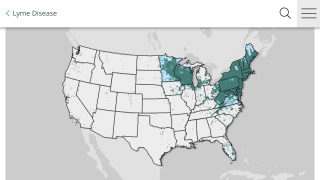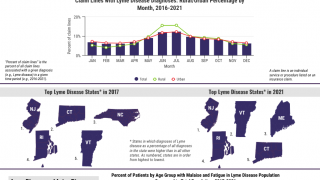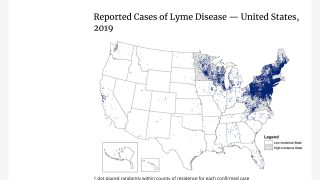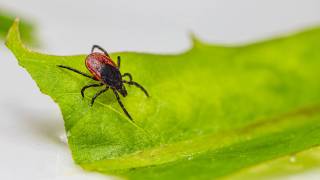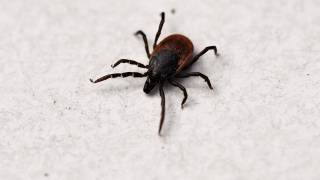Lyme's Southern Migration May Foretell More Serious Bacteria

Historically, Lyme disease occurred in the Northeastern states in the USA and more recently, it has spread to upper Midwest states, such as Wisconsin.
And, during 2000–2014, adult ticks carrying the B. burgdorferi bacteria traveled southward along the Appalachian Mountains arriving in Virginia.
But, these disease-carrying ticks did not stop in Virginia.
This southern migration continued into eastern Tennessee, which had been considered non-endemic for Lyme disease
According to the Centers for Disease Control and Prevention (CDC), the number of reported cases of tickborne diseases has more than doubled over the past 13 years.
And, Lyme disease accounts for 82 percent of reported tickborne cases in the USA.
A new study published by the CDC, documents the emergence of B. burgdorferi infected ticks in eastern Tennessee.
These infected ticks were predominantly found north of Knoxville, in Union County, Tennessee. The prevalence of B. burgdorferi in this area was low (10%), and had a limited distribution 7 out of 49 sites reported ticks.
This minimal bacteria distribution may actually not be good news.
This data could reflect natural barriers of B. burgdorferi transmission in the south, or more concerning might reflect the beginning of a different infection surge, said these researchers.
One example is Powassan virus (POWV), the only known North American tickborne encephalitis-causing flavivirus.
People infected with POWV often have a febrile illness that can be followed by progressive and severe neurologic manifestations, resulting in death in 10 to 15 percent of cases and long-term sequelae in 50 to 70 percent of survivors.
There were only 20 USA cases of POWV infection before 2006, but 99 cases were documented between 2006 and 2016, reported The New England Journal of Medicine (NEJM).
There is no known treatment for the disease, and serological testing for POWV is available only at some specialized laboratories.
This increase in POWV cases highlights the need for increased attention to this and other emerging viruses.
As an example, Heartland and Bourbon viruses, two previously unknown tickborne diseases, were discovered through next-generation diagnostic tests.
"The burden of tickborne diseases seems likely to continue to grow substantially. Prevention and management are hampered by suboptimal diagnostics, lack of treatment options for emerging viruses, and a paucity of vaccines,” wrote Anthony Fauci, MD, director of the National Institute of Allergy and Infectious Diseases, and colleagues in the NEJM commentary.
The biggest gap in preventing the spread of tickborne diseases is the lack of licensed vaccines.
Historically, infectious-disease vaccines have targeted specific pathogens, but another strategy would be to target the vector.
This approach could reduce transmission of multiple pathogens simultaneously by exploiting a common variable, such as vector salivary components.
A Phase 1 clinical trial is underway to evaluate mosquito salivary-protein–based vaccines.
Since tick saliva also contains proteins conserved among various tick species, this approach is being explored for multiple tickborne diseases.
These authors did not disclose conflicts of interest: Catharine I. Paules, M.D., Hilary D. Marston, M.D., M.P.H., Marshall E. Bloom, M.D., and Anthony S. Fauci, M.D.
These researchers did not disclose conflicts of interest: Graham J. Hickling, Janetta R. Kelly, Lisa D. Auckland, and Sarah A. Hamer.
Our Trust Standards: Medical Advisory Committee


